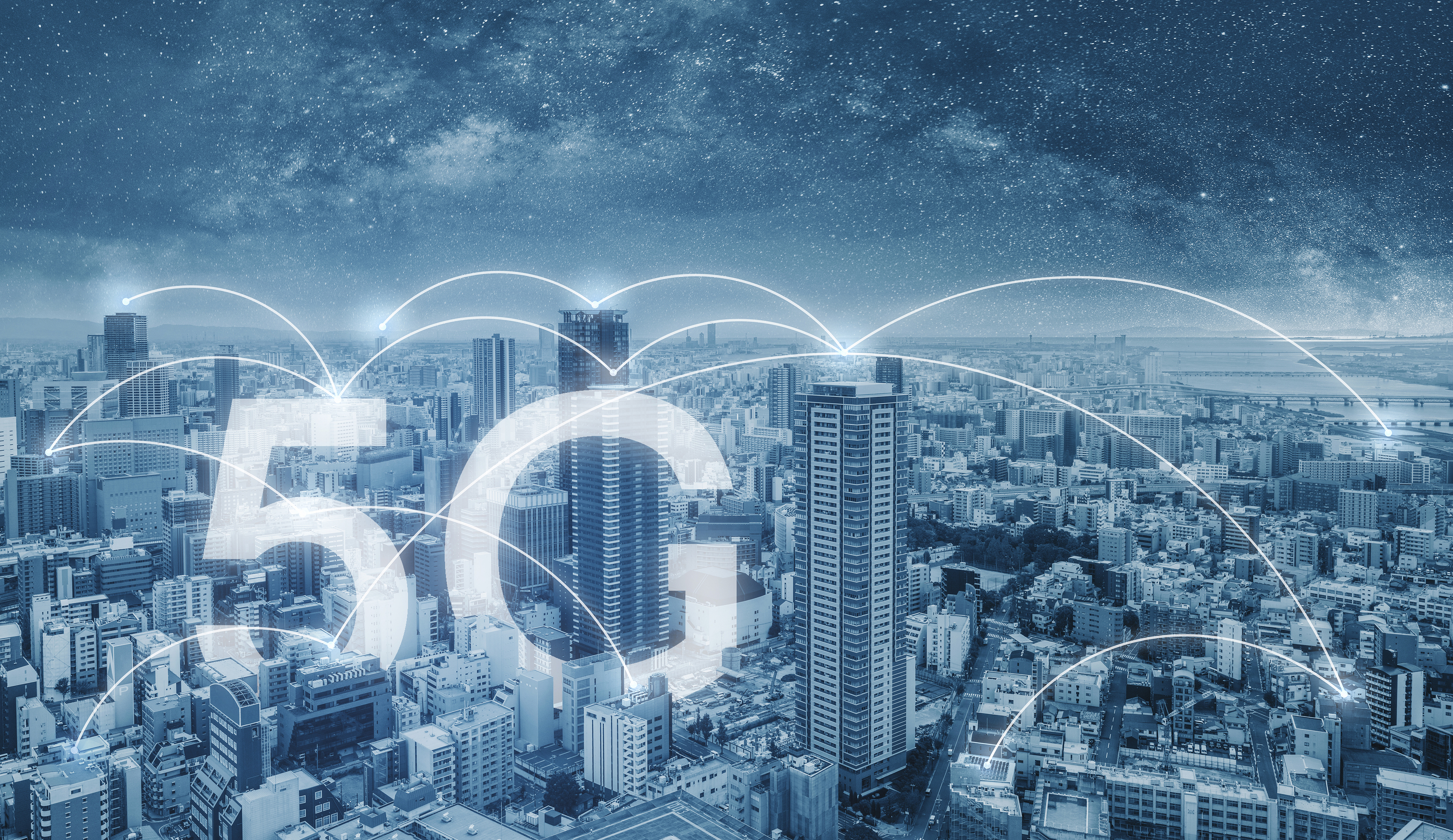
06 Mar What Is 5G Technology and How Will It Affect Communication with Cell Networks?
Technology is advancing at such a rapid pace that it’s understandable if you’re having trouble keeping up. There is no space where that trend is truer than in mobile technology. Thankfully, shifts in wireless technology have always followed a simple naming convention that began with 1G analog standards in the 1980s and continued with 4G through the last decade.
Enter 5G, the newest generation of cellular mobile communications that is slated to increase data speeds, reduce latency, enable massive device connectivity, and much more. These advances will permit further development of the Internet of Things, which allows devices to connect to the internet as well as each other.
The Internet of Things, in turn, is enabling revolutionary advances like smart cities that promise to make strides toward environmental goals, such as the reduction of waste and improved energy efficiency.
There is a clear sense of geopolitical intrigue in the story of the ongoing development of 5G networks. Numerous countries, including the United States and China, are currently engaged in a race to be the first to become industry leaders in the new technology. The stakes are high, as there have been estimates that the early adoption of 5G technology will result in upwards of five hundred billion dollars being added to GDP and 1.2 trillion dollars in long-run consumer benefits.
What Is 5G?
Put simply, 5G is the fifth generation of cellular wireless networks and will feature significant improvements in bandwidth and latency. 5G home networks, with their potential for unlimited high-speed data, will be a remedy for consumers struggling with data caps and throttling.
While 5G has ostensibly already seen a soft launch in some parts of the US, the reality is that true 5G will not be usable for most people until a new generation of phones is released within the next couple of years. Useful 5G enabled apps will likely be released around 2022.
Controversially, some U.S. cellular providers offering “5GE” cell service is not actually real 5G wireless, but rather, just a small improvement over their existing 4G LTE network.
Uses of 5G Technology
5G speeds are reported to allow a theoretical maximum of 20 Gigabytes per second (Gbps), with a bare minimum of 100 Megabytes per second (Mbps). For comparison, this would blow away the current 1 Gbps maximum speed enjoyed by Google Fiber users. Advances in the Internet of Things are widely expected to follow this explosion in bandwidth.
Self-driving vehicles, virtual reality, augmented reality, smart cities, and connected homes are likely to receive a boost from the deployment of 5G networks. FCC Commissioner Brendan Carr cites potential use cases for 5G, ranging from autonomous vehicles and smart cities to remote surgery and the further development of telehealth services.
5G Communication with Cellular Networks
5G will use higher frequency waves, starting in the range of 28GHz to 39GHz. These higher frequency waves, known as millimeter waves, degrade over a shorter distance than 3G and 4G frequency waves, which are lower on the GHz spectrum. As a result, cellular providers will have to install many “small cell” sites designed to boost the wireless signal.
Fortunately, these small installations promise to genuinely be small, and will not be unduly invasive to local communities, despite some early resistance to their deployment. Likely with the reticence of local governments in mind, Carr contrasts the “hundreds of thousands of new, small-scale facilities with antennas no larger than a small backpack” that 5G will require with “the hundred-foot towers that many people associate with prior generations of wireless service.”
Have you ever noticed that your cellular service slows down considerably when attending an event like a football game or a concert? 5G will put that in the past, as the enhanced millimeter waves, in combination with massive MIMO (Multiple Input Multiple Output), will be better-suited to project signals to areas with dense data use than current 4G LTE networks are capable of doing. It is possible, through these advances, for wireless service to be provided to as many as 1 million devices per square kilometer.
5G and Fiber Optic Cable
The arrival of 5G will necessitate a significant capital expenditure into wired infrastructure. To that end, there will be a need for investment into fiber optic 5G cable assemblies. The previously mentioned “small cell” cites will also require some combination of either copper, radio, or fiber optic connections, with the choice dependent on location.
Fiber installations could prove especially important for rural communities, as such locations will be more likely to add a 5G harness and antenna to existing power lines. Consequently, there will be a clear need to maintain existing infrastructure, necessitating the continued maintenance and installation of coax assemblies for cell towers.
5G and NAI
5G is nearly here, and it brings with it the promise of monumental advances to cutting-edge Internet of Things technologies like self-driving cars and smart cities. While the transition to 5G has already begun, it will still be some time before the effects are felt on a widespread basis and the ramifications of the network upgrade can be enjoyed.
For our part, NAI is ready to provide the custom fiber optic and coax cable harnesses necessary to support the widespread rollout of 5G technology. If you have any questions about the forthcoming transition to 5G or about our products and services, including 5G cable harnesses or 5G assemblies, please get in touch today and let us know how we can help you. We look forward to working together in what promises to be a new age of interconnectivity.

